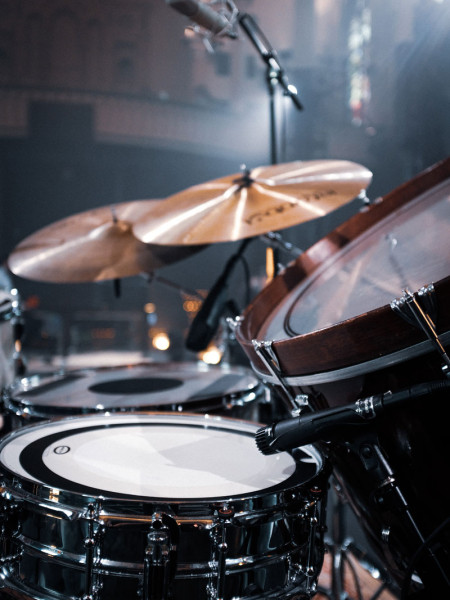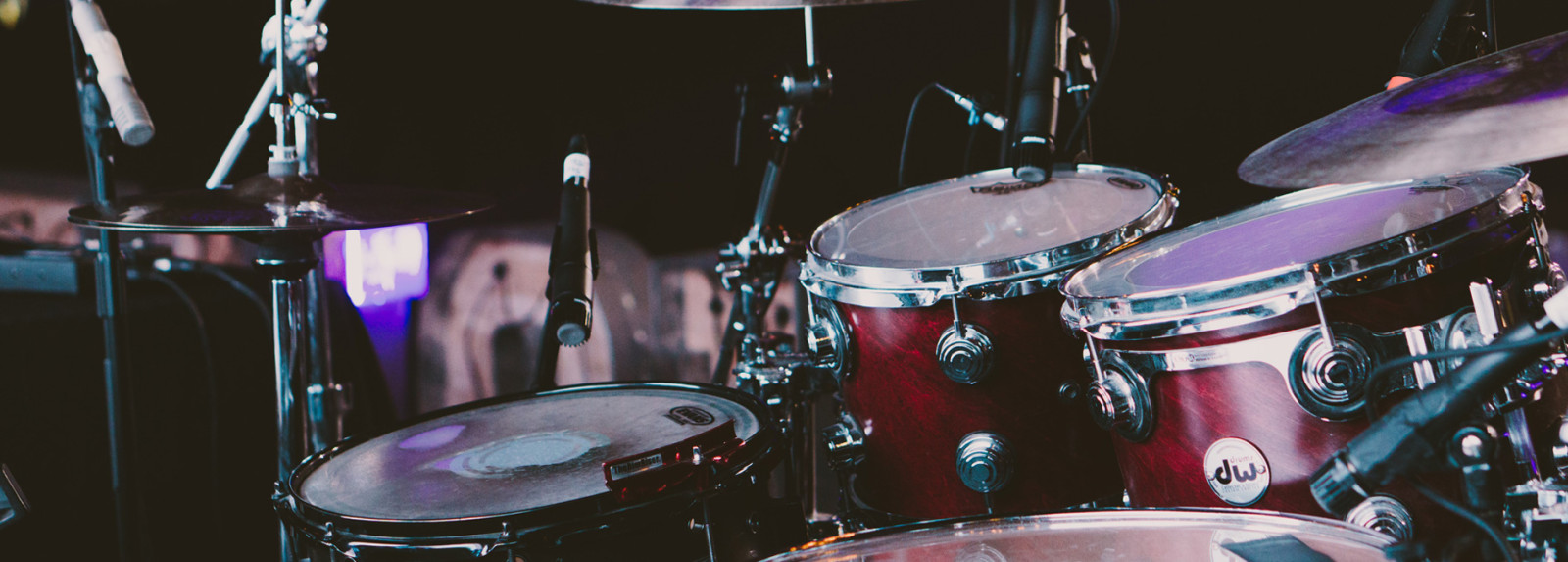- Home
- Music Tuition
- Instruments
- Percussion
- Drum Kit

Ready to learn
the Drums?
apply for lessons
Welcome to the Drum Kit
The standard drum kit consists of snare drum, bass drum, tom toms, high-hat and cymbals. Many players choose to add extras to the standard kit including various cymbals, drums and other unpitched instruments.
The drum kit is used extensively in pop and rock music as well as in many other styles of music. Coordination and a strong sense of pulse is essential for a kit player.
Snare Drum
The snare drum can be played on its own or as part of a drum kit. Stick technique is essential for learning rudiments and pupils will normally begin on the snare alone. The snare is given its name from the metal snares that are strung on the underside skin. The snare itself can be engaged or disengaged depending on what sound the player requires.
The snare drum is used as part of a drum kit in most western pop music and provides the percussion family with an extra 'bite'.
Take a moment to listen to Ravel's Bolero - one of the most famous snare drum rhythms of all time.
Who can play the drum kit?
Secondary school age onwards. Younger pupils may have difficulty reaching foot pedals at the same time as other parts of the kit, but can make a start with a snare drum.
If it is not suitable for everyone, what alternative instrument would you recommend and why?
Younger pupils can start on snare drum and move onto drum kit, as well as other percussion instruments.
What qualities of the drum kit are special?
You can play a wide variety of music – rock, jazz, R’n’B, hip-hop, folk, pop, brass band and world music among others.
Learning to play any instrument develops lots of new skills. What are the particular benefits of playing the drum kit?
A very physical instrument – good for burning calories and stress relief!
Very good for developing physical coordination and spatial awareness.
How are drum kits similar/different to other instruments?
The drum kit is an easily recognisable instrument (made up of bass drum, snare drum, tom-toms and cymbals).
Drum kits are different to other instruments because they can be reconfigured and incorporate lots of different percussion instruments to suit different musical styles.
Are there any famous musicians or pieces associated with the drum kit?
Steve Smith, Tommy Igoe, John Bonham,
Travis Barker, Tony Royster Jr., Buddy Rich, Chad Smith, Jojo Mayer – the list goes on!

